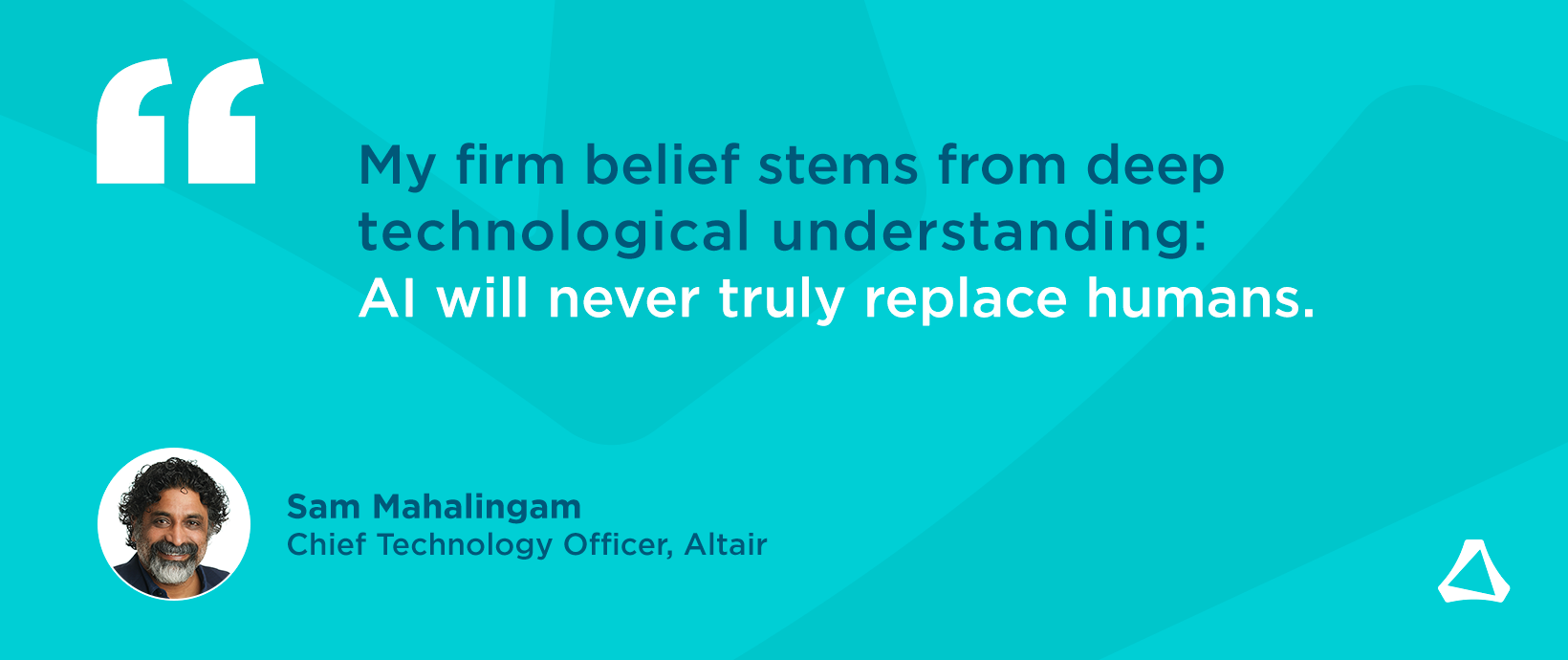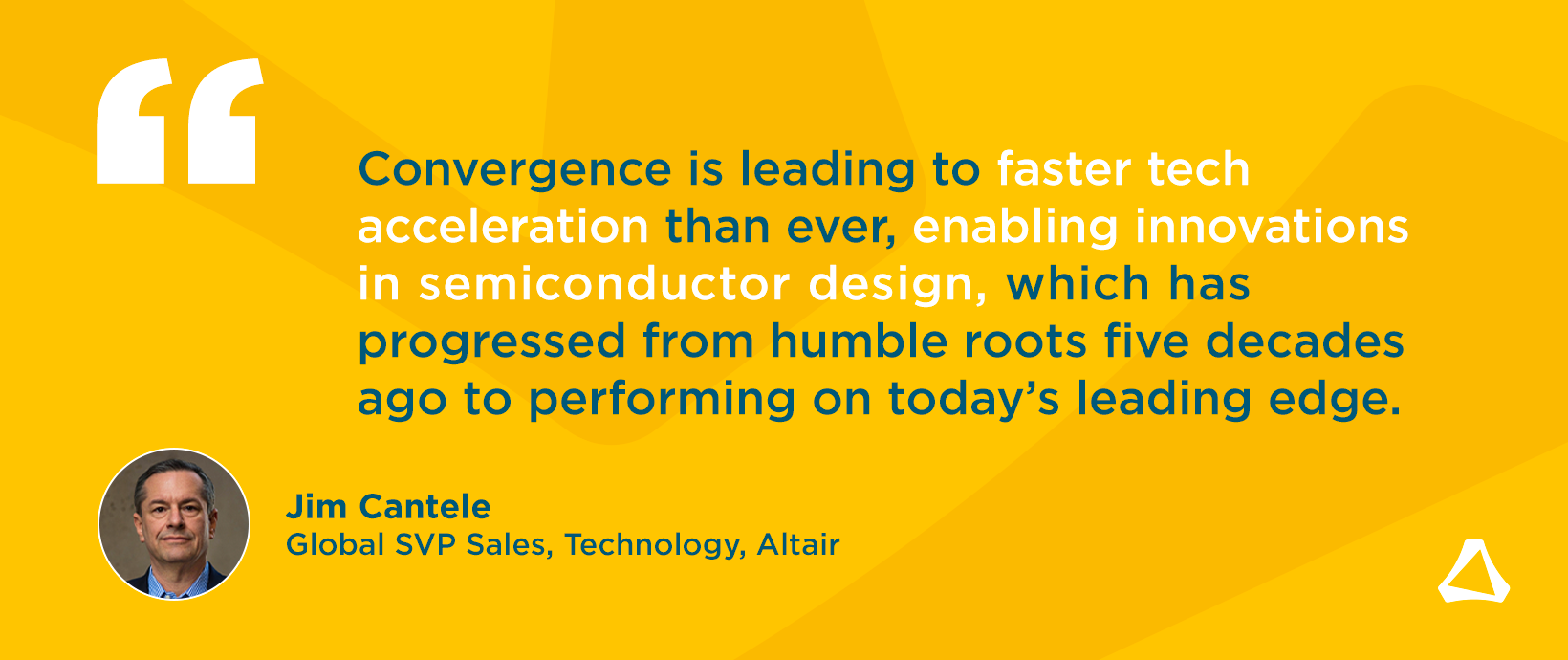Altair Acquisition Expands Leadership and Pushes Boundaries in Simulation-Driven Design

The power of technology is unstoppable and software development advances are accelerating exponentially. At Altair, we are driven by pushing technology to the edge. And that means looking further into the future than anyone else. By predicting future trends, we can create powerful solutions to fuel increasingly complex designs and better decision making.
Once we understand what trends are emerging, we look for ways to solve for them so we can provide our customers the most comprehensive set of solutions in the market to address their toughest problems. Sometimes that means our own brilliant engineers create these solutions, other times it’s through strategic acquisitions of state-of-art technologies.
Altair has acquired 28 companies from all corners of the globe. Occasionally it takes time for outsiders to see the strategy. In 2003 we bought PBS Professional, a high-performance computing (HPC) workload management and scheduling technology originally developed at NASA. People thought we were nuts because it didn’t neatly tuck in with our existing portfolio of simulation software. But we knew future simulations would need massive computing power to solve increasingly large and complex problems with speed and accuracy. This had two long-term effects on Altair. First, our presence in HPC helped us develop our solver portfolio into industry-leading performers in terms of high-end scalability through parallel processing. Secondly, new markets in simulation opened for us. For example, Altair PBS Works™ is now the industry leader in supercomputer workload management for weather prediction.
In December 2018, we acquired Datawatch because we understood the ability to leverage and analyze data would unleash invaluable insight and intelligence. Some people scratched their heads. But we saw that when combined with our existing portfolio of simulation, HPC and IoT technology, the increase in accuracy and speed, machine learning and artificial intelligence provides us and our customers is an incredible competitive edge.
We continue down that road of exploration and advancement with the acquisition of Polliwog Co. Ltd., an established player in the Korean global electronics industry for electronic design automation (EDA) software. This strategic move will expand our capabilities to grow in the EDA market and our ability to provide software for system-level design decisions, which is essential to truly move design innovation forward. Historically, mechanical engineers and electrical engineers have worked on separate systems, designing in a vacuum, but as technology evolves, those areas are converging. An integrated design of mechanical behavior and electronics is becoming a trademark of today’s product development.
Polliwog’s powerful printed circuit board (PCB) modeler, solvers, and design verification tools allow EDA engineers from all areas at small and enterprise organizations to collaborate at never-seen-before levels. Polliwog will immediately allow us to greatly expand our support to our electronics customers. The Pollex Modeler will fit seamlessly into electronic system level design environments at customers using any of the leading ECAD PCB design solutions. This is similar to how Altair HyperMesh works in any MCAD environment.
Polliwog’s impressive customer roster includes major players in the consumer electronics industry, like Samsung and LG Electronics. They use the PollEx software for PCB design automation, simulation and manufacturing verification.
The PollEx Modeler imports complete PCB design data and provides users with convenient ways to exploredesign details and verify manufacturability. PollEx is an open solution, which transfers data flawlessly between different ECAD and simulation
environments. Its many features include query, measure, finding objects, and various reporting. It includes integrated solvers for circuit, thermal, power and signal integrity simulation that are easy to use and give instant multi-disciplinary design
feedback.
PollEx PCB Modeler to view the schematic layout, explore actual layered PCB structures in 2D or 3D, create component & BOM lists, and more.
Polliwog shares Altair’s open system philosophy and integrates easily into customer environments which use any of the leading PCB design tools. It will integrate well with existing Altair HyperWorks™ software solutions – giving our customers an immediate edge.
Additionally, Polliwog’s solvers toolset includes circuit, thermal, power and signal integrity simulation, which will expand Altair’s existing portfolio for electronics – complementing our advanced thermal, circuit, and electromagnetic solvers. These innovative and practical solutions give instant design feedback, a perfect fit for what we call “simulation-driven design.”
Traditionally, designers and engineers would only use simulation software after a proof of design was built, and only then it would be physically tested. Now, advanced designers use simulation before a physical build, as it cuts down on time and costs, all while increasing efficiency and accuracy. Simulation is a game-changer when used at the beginning of the design process.
And we won’t stop there. Altair will continue to push the limits of what technology can enable and the benefits it can bring. We are driven by the need to solve our customer’s toughest problems to enable their success.





